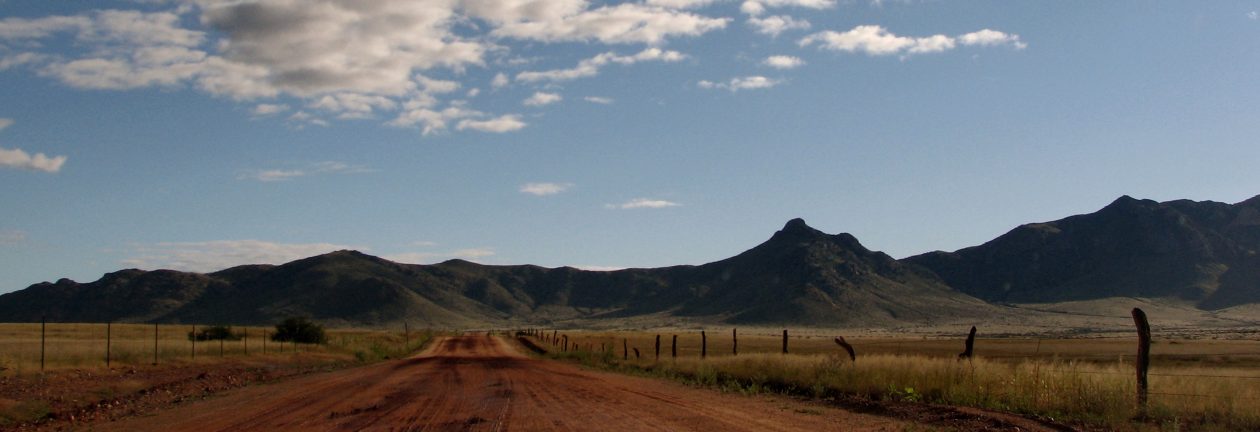Macau, China
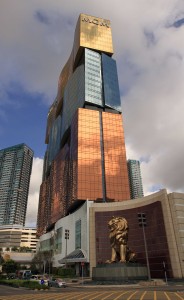
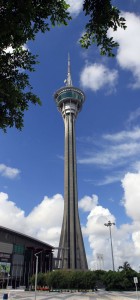
Today I woke up very early to get to Macau before all the museums and tourist sites opened up. I took the subway to Sheung Wan Station and from there walked to the port. I bought my tickets (the return ticket as well), went through Hong Kong customs, waited for an hour, and then boarded the Premier Jetfoil which took me to the Macau Port. The journey by TurboJET lasted about an hour; once the boat docked, I disembarked, went through Macau customs, made it out, and was soon walking along the shore to the A-Ma temple (a Taoist temple built in 1488 AD). Along the way I passed by the Babylon, Sands, and MGM Grand Casinos, which were all situated by the shore. I also walked by the statue of Guanyin (a blend between images of the bodhisattva Guanyin and the Holy Mary) and the Macau Tower before finally reaching the temple.

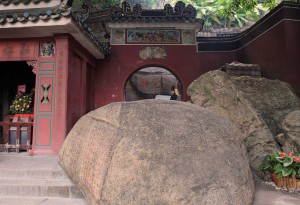
The A-Ma temple complex had a number of small buildings and shrines built up on the hillside. Also, for the first time, I saw many conical, spiral incense sticks, usually suspended in groups of five. After walking up and down the paths of the temple complex, I followed the signs leading me to the next site to see, which was the Moorish Barracks, a building with a clear Arabesque design, influenced by Moorish structures in Portugal. After passing through Lilau Square (a quiet and quaint spot in Macau), I walked through the streets (most of which had an Old World feel left over from the Portuguese Occupation of this island city) to St. Lawrence’s Church. I then passed by St. Joseph’s Seminary and Church to St. Augustine’s Square, where Dom Pedro V Theater and St. Augustine’s Church are located.
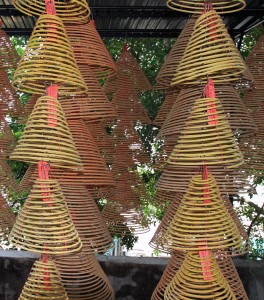
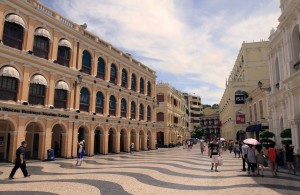
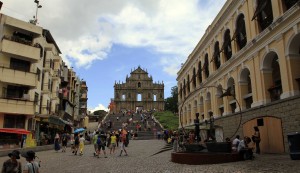
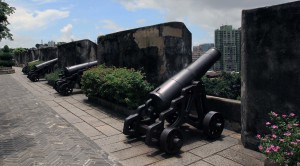
Finally I reached Senado Square which is the more famously photographed square of Macau. The square tilings were done in a black and off-white wavy pattern; this, combined with the architectural style of the adjacent buildings, gave it a Mediterranean look, or more specifically, and Iberian Peninsula look. It felt as if I was in Europe already. From the square, I walked to Macau’s most famous site, the ruins of St. Paul’s Cathedral (originally built in 1602 AD). All that is left of the cathedral, after a fire during a typhoon in 1835 AD, is the facade, supported up by steel beams from behind, and remnants of it’s crypt. I, as well as many other tourists, took plenty of pictures in front of the facade and along side the steps leading up to it. Also, next to the Cathedrals remains, toward the left of it, is a portion of the old city wall and a Buddhist temple (Na Tcha Temple). To the right of the remains, stands the old Mount Fortress, where the Macau Museum is located (though closed on Mondays). The fortress walls still stand, and on top are many canons on display, looking out at the metropolis. From the top of Mount Fortress are excellent views of the city’s skyscrapers (such as the Casino Lisboa) and the run down apartment complexes found below.
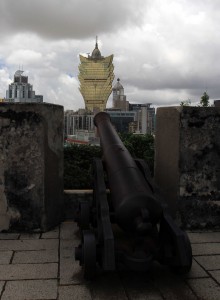
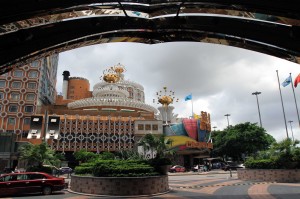
After having seen much of the old town, I then walked to the Casino Lisboa. I walked through the main lobby with its many luxurious items on display (carved ivory, gold sculptures, fine crafted furniture, etc.) before heading to the casino, which exists on several floors, each with different minimum bets (low to high roller categories). Also, in this casino – and other casinos in Macau – there were Baccarat tables galore (with eight seats including the dealer/banker – some what of a rarity in the United States) and many of them were occupied by gamblers during this afternoon; Ian Fleming would approve! I decided instead of losing my money to gambling, I would lose it to beer, a much better investment in my mind. I sat down at the Grand Stage Bar and while drinking my beer I got to watch five Slavic women wearing glittering outfits that test the limits of decency dance to Andrews Sisters tunes; they were rehearsing for a performance later tonight. They then performed to some modern music in more traditional showgirl outfits (no longer inspired by 1940s wear). During the rehearsals, a Macauan septuagenarian sat down next to me to chat and make friends. He would clap and cheer on the girls as they moved to the music, becoming more raucous each time they showed more of their assets. The bartender informed me that he had been drinking since 09:00 today – that was five hours ago; he was clearly toasted and even driving customers away with his banter, but he was kind to me. For the last rehearsal I watched, the girls came out in much more modest costumes, fit for 19th century decadence, and they performed the Can-Can. I then finished my third beer and knew it was time to leave lest I wanted to end up like the bawdy old man.
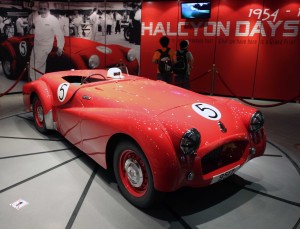
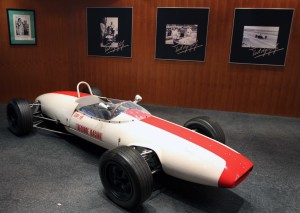
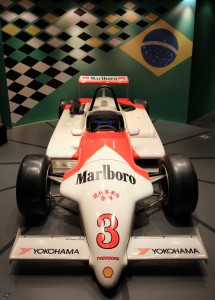
Properly inebriated, I walked out of the casino and tried to get to Guia Fortress; along the way I stopped inside the Casino Real and decided to ask where the Grand Prix Museum is located. Luckily for me, it was very near; I was given a map, directions, and pointed in the right direction. I found the museum and stepped inside (entrance was free) and looked at all the racing memorabilia on display, all associated with Macau. There were Formula 1 and 3 racing cars, motorcycles, go-karts, and other racing vehicles. There was even a display showcasing the winning F3 car Ayrton Senna raced in 1983 here, along with his racing suit. Overall, though, the museum was small, and it didn’t take long to see everything there. After finishing up in the Grand Prix Museum, I went back upstairs to see the Wine Museum. This was another small museum that basically had displays set up detailing the history of wine and the process of making wine; most of this I already knew from reading several books on Wine and its history, but there was one quote on display that I did not know and liked very much: “Wine is the most civilized thin in the world.” – Ernest Hemingway. The best part about the Wine Museum, was at the end, for a reasonable price, you could taste several types. I had a Muscatel wine that smelt and tasted of honey and flowers, a dry earthy tart red wine, and a white port that had a strong taste of vanilla.
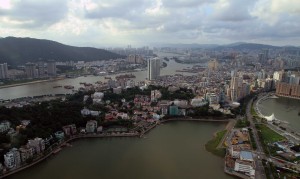
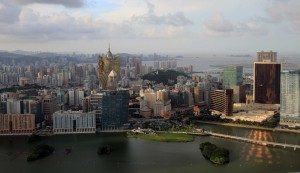
So, after consuming more alcohol, I exited the museum complex and trekked up to see the Guia Fortress. Located on top of a hill, the fortress has a lighthouse and a chapel built there. It also offered more great views of the city. After that hike, I descended the hill and walked South by West to get to the Macau Tower. Upon reaching the counter on the inside, I decided to not bungy jump the world’s tallest bungy jump due to the price being rather high (at almost $250 USD) and the fact that I had already bungy jumped once in my life, so I bought the ticket just to go up to the inner and outer viewing platforms (where I got to live through two bungy jumpers I witnessed plummeting to the ground). The views of Macau were spectacular, being so high above the city; I took many photos, before heading back down.
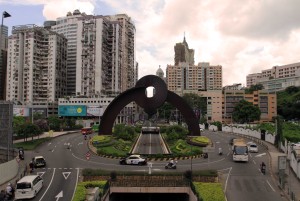
With plenty of time to kill before my return ferry to Hong Kong, I walked to the Sands, I ate at the McDonalds there (got to save money for beer), ate dinner, and then walked in to the main casino floor. I sat down at the bar and while having three more beers for the day, I got to witness some more performers. First male and female dancers came out in Brazilian themed costumes dancing to Latin beats (they performed a number of impressive flips, twirls, and twists in the air); then about 35 minutes later, six female Asian dancers came out to dance to several pop songs; in another 35 minutes, six other Asian dancers came out in Ballerina costumes to dance to more pop songs and with each new song, they shed articles of clothing (this may seem sleazy and overtly sexual, but they never went partial or full nude and it was all done in good taste); finally, as I was finishing my last beer, dancers came out yet again to dance to some more pop songs.
Once my beer was consumed, I walked to the ferry port, went through Macau customs, waited for the TurboJET to arrive, boarded the ship, fell asleep, woke up as we docked at Hong Kong, went through Hong Kong customs again, took the subway back to the hostel, and finished a very long and tiring day sleeping in bed. Overall, I really enjoyed Macau; it was a blend of the Orient, Portugal, and Las Vegas. I would love to come back sometime.
